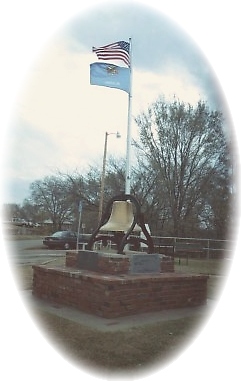Lincoln County, OK
 The Plains Indians roamed this area for hundreds of years before it was turned over to the Iowa, Sac and Fox, Citizen Potawatomi and Absentee Shawnee Indian tribes after the 1866 treaty between the United States and the Creek Nation. In 1890, the government bought the land again and designated two counties as County A and County B, whose county seats historically became the only two cities in Oklahoma to be settled by their own land run. County A became Lincoln County.
The Plains Indians roamed this area for hundreds of years before it was turned over to the Iowa, Sac and Fox, Citizen Potawatomi and Absentee Shawnee Indian tribes after the 1866 treaty between the United States and the Creek Nation. In 1890, the government bought the land again and designated two counties as County A and County B, whose county seats historically became the only two cities in Oklahoma to be settled by their own land run. County A became Lincoln County.Prior to settlement, this area had no rail link with the outside world and cattle trails were established for marketing purposes. One such trail, the West Shawnee Cattle Trail, entered Lincoln County between Meeker and Prague and angled northeast to near Stroud, then northwesterly out of Lincoln County near Avery. A number of roads were also cut across the county for marketing access. The first road, the "Ozark Trail," crossed the county at approximately the same course as the old "U.S. Highway 66." The location of Lincoln County and its mesh of highways form good transportation routes to the major cities of Oklahoma.
Lincoln county has contributed much to the development of the history of Oklahoma. The fourth governor of the state was from Lincoln County. James B.A. Robertson served as governor from 1919 to 1923. Also, a native of Kendrick, Roy J. Turner, was elected governor and served his state from 1949 to 1951.
Athletes Jim Thorpe, Carl Hubbell, Paul and Lloyd Waner all honored Lincoln County history.
John Embry, who homesteaded northeast of Chandler, served as United States Attorney for the Western District of Oklahoma from 1907-1912. During that time he was instrumental in restoring the right to vote to the Negroes who had been stripped of that privilege by the so-called, "Grandfather Law."
Bill Tilghman, a pioneer making the run in 1891, was elected sheriff of Lincoln County in 1900. He served as United States Marshal and became known as "Two-Gun Bill." Tilghman and J. Benny Kent, a cameraman who lived in rural Lincoln County, produced a single movie entitled "The Passing of the Oklahoma Outlaw." Tilghman was the director as well as star of the movie.
In early statehood years, Chandler was considered the militia center of the state. It is headquarters to the First Battalion, 160th Field artillery of the 45th Infantry Brigade. The battalion strives to maintain the highest standards of artillery training.
Many Czechoslovakian settlers came to the Prague area and contributed their skills in the development of that farming and business community.
Explore Lincoln County
Chandler Lake
Chandler Lake is the smaller of the two lakes in Chandler.
The lake offers excellent fishing while being adjacent to the Chandler Municipal Golf Course. There is plenty of parking and it does provide aboat ramp.
FEE SCHEDULE
Chandler, OK Recreation
Kee-Tilghman-Erwin House
National Register of Historic Places Built in 1898 by O.B. Kee, this mansard-roofed home was purchased in 1901 by famed Deputy U.S. Marshal, William Mathew "Bill" Tilghman, Lincoln County homesteader, sheriff, state senator, and one of the territorial lawmen known as the "Three Guardsmen."
Chandler, OK Historic HomesRoute 66 Gas Station
On the north end of the business district, look for the peaked roof of the vintage 1930's Phillips 66 station. Although no longer in use, the building reminds us of travel down the historic Route 66 which runs through downtown Chandler.
Chandler, OK Historic BuildingsThe Mascho Buildings
National Register of Historic Places The oldest commercial buildings in Lincoln County, these sandstone "twin" buildings were built by pioneer merchant, A.E. Macho in 1897 and 1898. The earlier building was first constructed in 1896
Chandler, OK Historic BuildingsJohnson-Yinger-Young House
National Register of Historic Places This two-story white clapboard home was built in 1897 by H.F. Johnson as a simple territorial "four square" home. In 1905
Chandler, OK Historic HomesConklin-Marshall-Gregory House
First Presbyterian Church
National Register of Historic Places Built in 1894 of lumber hauled by wagons from Guthrie, Oklahoma, this structure was one of few, if any public buildings left intact after the tragic cyclone of 1897
Chandler, OK Historic ChurchesBell Cow Lake
Bell Cow Lake has four recreation and camping areas, two on the North Side and two on the South Side.
North Side of the Lake
Area A
Pavilion
Five Parking Sites (No Electricity)
Restroom Facilities
Chandler, OK Recreation
National Guard Artillery Encampment
The Statistical House was built in 1907 at Chandler to house officers and scorekeepers compiling results of rifle practices and competitions during Oklahoma National Guard encampments and other training sessions. It later served half a century as housing for Business and professional Women'
Chandler, OK MemorialsTilghman Park
Tilghman Park occupies the lower field area of the historic National Guard Encampment artillery practice field. It contains many facilities to insure a full day of family fun. You will find a pavilion, Tennis Courts, Volley Ball Area, Play Ground Area, and Picnic Area with Tables and Benches.
Chandler, OK RecreationJim Thorpe
James (Jim) Francis Thorpe with the Sac and Fox name of "Bright Path", was born on May 22, 1887 on a farm just south of Prague, Oklahoma. In 1950, through an Associated Press poll of 393
Prague, OK Famous PeopleThe Wolcott Building
National Register of Historic Places A typical example of a Victorian storefront with angled doorway and iron column, this two-story building built in 1903
Chandler, OK Historic Buildings